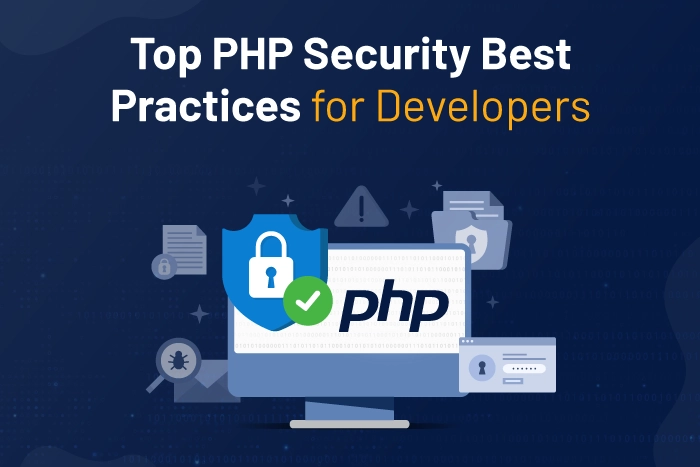Building a secure PHP website is critical in today’s digital landscape, where cyber threats like SQL injection, cross-site scripting (XSS), and session hijacking are ever-present. By implementing PHP security best practices, you can safeguard your website, protect user data, and maintain trust. In this guide, you’ll learn actionable techniques to secure your PHP code, prevent common vulnerabilities, and strengthen your website’s defenses. Whether you’re a beginner or an experienced developer, these expert tips will help you create a robust and secure PHP application.
Why PHP Security Matters
PHP powers over 75% of websites, including platforms like WordPress, making it a prime target for attackers. A single vulnerability in your PHP code can lead to data breaches, defacement, or loss of user trust. By prioritizing secure PHP coding, you can mitigate risks and ensure your website remains safe. This article covers essential practices, including input validation, secure database interactions, session management, and more.
1. Validate and Sanitize User Input
User input is the most common entry point for attacks like SQL injection and XSS. Always validate and sanitize data before processing it.
- Validation: Ensure input meets expected formats (e.g., email, numeric values).
- Sanitization: Remove or escape harmful characters.
Use PHP’s built-in functions like filter_var() for validation and sanitization. For example, to validate an email:
<?php
$email = $_POST['email'];
if (filter_var($email, FILTER_VALIDATE_EMAIL)) {
echo "Valid email address.";
} else {
echo "Invalid email address.";
}For sanitization, use htmlspecialchars() to prevent XSS by escaping HTML characters:
<?php
$user_input = $_POST['comment'];
$safe_input = htmlspecialchars($user_input, ENT_QUOTES, 'UTF-8');
echo $safe_input;2. Prevent SQL Injection with Prepared Statements
SQL injection occurs when attackers manipulate database queries through user input. To prevent this, use prepared statements with PDO or MySQLi instead of concatenating user input into queries.
Example using PDO:
<?php
try {
$pdo = new PDO("mysql:host=localhost;dbname=mydb", "username", "password");
$pdo->setAttribute(PDO::ATTR_ERRMODE, PDO::ERRMODE_EXCEPTION);
$stmt = $pdo->prepare("SELECT * FROM users WHERE email = :email");
$stmt->execute(['email' => $_POST['email']]);
$user = $stmt->fetch();
} catch (PDOException $e) {
echo "Error: " . $e->getMessage();
}Prepared statements bind parameters securely, making it impossible for attackers to inject malicious SQL.
3. Protect Against Cross-Site Scripting (XSS)
XSS attacks inject malicious scripts into your website, harming users or stealing data. To prevent XSS, always escape output and use secure headers.
- Use
htmlspecialchars()for output escaping, as shown earlier. - Implement a Content Security Policy (CSP) to restrict script sources. Add this to your
.htaccessfile:
Header set Content-Security-Policy "default-src 'self'; script-src 'self' https://trusted.cdn.com;"Learn more about CSP from the Mozilla Developer Network.
4. Secure Session Management
Sessions are critical for user authentication but can be hijacked if not secured. Follow these PHP session security practices:
- Use
session_regenerate_id(true)to generate new session IDs during sensitive actions like login. - Store session data securely with
session_set_cookie_params().
Example:
<?php
session_set_cookie_params([
'lifetime' => 0,
'path' => '/',
'domain' => '',
'secure' => true,
'httponly' => true,
'samesite' => 'Strict'
]);
session_start();
session_regenerate_id(true);The secure and httponly flags ensure sessions are transmitted over HTTPS and are inaccessible to JavaScript, reducing the risk of session hijacking.
5. Use Secure PHP Configuration
Your server’s PHP configuration can introduce vulnerabilities if not set correctly. Key settings to adjust in php.ini:
- Disable
display_errors: Prevent error messages from revealing sensitive information. Setdisplay_errors = Offandlog_errors = On. - Limit file uploads: Set
file_uploads = Offif not needed, or restrict upload size withupload_max_filesize. - Disable dangerous functions: Disable risky functions like
exec()andsystem()withdisable_functions = exec,system,passthru,shell_exec.
Restart your server after updating php.ini.
6. Implement Strong Password Hashing
Storing passwords securely is vital to protect user accounts. Use PHP’s password_hash() and password_verify() for secure password storage.
Example:
<?php
$password = $_POST['password'];
$hashed_password = password_hash($password, PASSWORD_BCRYPT);
// Verify password
if (password_verify($password, $hashed_password)) {
echo "Password is valid!";
} else {
echo "Invalid password.";
}The PASSWORD_BCRYPT algorithm is secure and automatically salts passwords.
7. Secure File Handling
File uploads and inclusions can expose your website to attacks if not handled properly. Best practices include:
- Validate file types and sizes before processing.
- Store uploaded files outside the web root.
- Avoid using user input in
includeorrequirestatements to prevent local file inclusion (LFI) attacks.
Example of secure file upload:
<?php
$target_dir = "/secure/uploads/";
$allowed_types = ['jpg', 'png', 'gif'];
$file = $_FILES['userfile'];
if ($file['size'] <= 1000000 && in_array(pathinfo($file['name'], PATHINFO_EXTENSION), $allowed_types)) {
move_uploaded_file($file['tmp_name'], $target_dir . uniqid() . '.' . pathinfo($file['name'], PATHINFO_EXTENSION));
} else {
echo "Invalid file.";
}8. Use HTTPS and Secure Headers
Always use HTTPS to encrypt data in transit. Redirect HTTP traffic to HTTPS in your .htaccess file:
RewriteEngine On
RewriteCond %{HTTPS} off
RewriteRule ^(.*)$ https://%{HTTP_HOST}%{REQUEST_URI} [L,R=301]Additionally, add security headers like X-Frame-Options to prevent clickjacking:
Header set X-Frame-Options "DENY"9. Keep PHP and Dependencies Updated
Outdated PHP versions and libraries are vulnerable to exploits. Regularly update:
- PHP to the latest stable version (e.g., PHP 8.3 or higher in 2025).
- Dependencies managed via Composer.
Check for vulnerabilities in dependencies using tools like composer audit.
10. Implement Error Handling and Logging
Proper error handling prevents sensitive information leaks. Use custom error handlers and log errors securely:
<?php
set_error_handler(function($errno, $errstr, $errfile, $errline) {
error_log("Error: [$errno] $errstr in $errfile on line $errline");
return true;
});Conclusion
Implementing these PHP security best practices will significantly reduce your website’s vulnerability to attacks. From validating input to securing sessions and keeping PHP updated, each step strengthens your defenses. Stay proactive by monitoring logs, auditing code, and staying informed about new threats. By prioritizing secure PHP development, you can protect your users and maintain a trustworthy website.
For more tutorials on PHP, web development, and security, check out our PHP Tutorials category!


